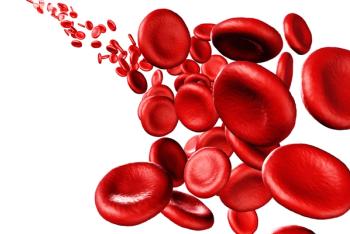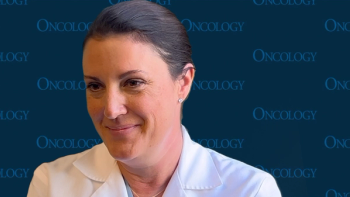
Oncology NEWS International
- Oncology NEWS International Vol 17 No 3
- Volume 17
- Issue 3
Dual seed/wafer implants promising in recurrent GBM
In a small study, patients with recurrent glioblastoma multiforme who received dual implantation of low-activity iodine-125 seeds and wafers containing carmustine (Gliadel) following surgery had a median survival of 69 weeks, with nearly one-fourth of patients (8 of 34) surviving 2 years.
CINCINNATI-In a small study, patients with recurrent glioblastoma multiforme who received dual implantation of low-activity iodine-125 seeds and wafers containing carmustine (Gliadel) following surgery had a median survival of 69 weeks, with nearly one-fourth of patients (8 of 34) surviving 2 years.
Median survival in similar studies of patients who received conventional oral or IV chemotherapy is approximately 26 weeks, said Ronald Warnick, MD, chairman of the Mayfield Clinic and professor of neurosurgery at the University of Cincinnati. Dr. Warnick and his colleagues at UC’s Neuroscience Institute reported the results in the Journal of Neurosurgery (108:236-242, 2008).
Because most GBM tumors recur within 2 cm of the initial tumor margin, Dr. Warnick and his team have focused their efforts on highly localized treatment. They had previously studied permanent radioactive seed implants, which deliver radiation for 6 months. Combining seeds and chemotherapy wafers was a logical next step, he said.
During follow-up, local disease progression was observed in 27 patients, and 23 of them died. Median progression-free survival was 47 weeks. The 1-year overall and progression-free survival rates were 66% and 32%, respectively.
Brain tissue death developed in nearly 25% of patients. It was treated successfully with surgery or hyperbaric oxygen therapy, however, and did not affect survival, the researchers commented.
Dr. Warnick cautioned that the effectiveness of the combination is not definitive, since the study did not include a control group. In future studies, he said, the combination will be used to treat patients newly diagnosed with GBM.
Articles in this issue
over 17 years ago
Recentin headed to phase III in first-line colon caover 17 years ago
Topo 2 alpha test FDA approvedover 17 years ago
RFA provides sustained pain relief in osteoid osteomaover 17 years ago
Renal ca surgery often determined by doctors’ practice styleover 17 years ago
Partial nephrectomy underutilized for small renal tumorsover 17 years ago
Most older men with early-stage cancer can avoid treatmentover 17 years ago
SERM reduces ADT side effectsover 17 years ago
New serum biomarker appears to detect colon cancerover 17 years ago
Hypofractionated IMRT does not increase sexual side effectsover 17 years ago
Surface mapping aligns patients for external beam PBINewsletter
Stay up to date on recent advances in the multidisciplinary approach to cancer.























































































